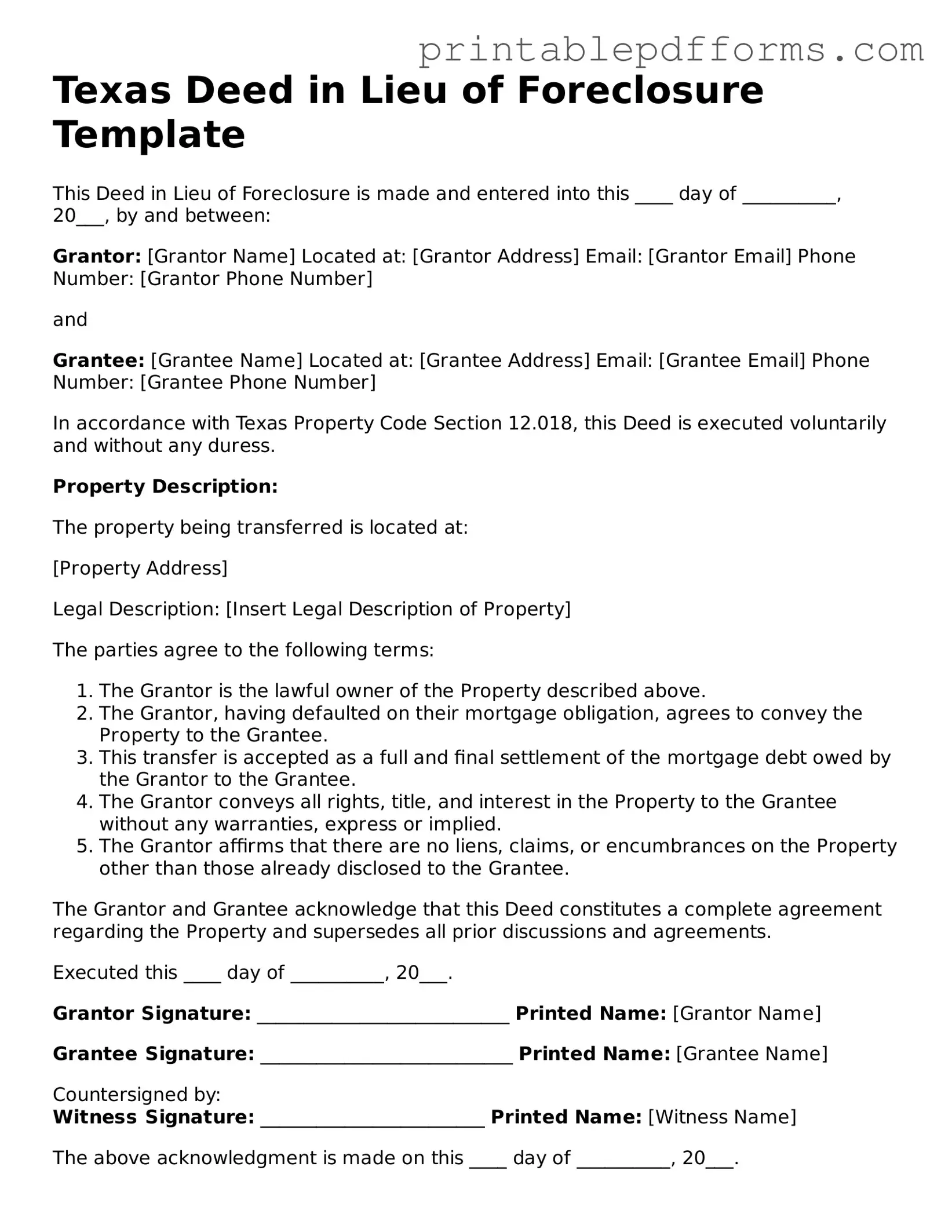Texas Deed in Lieu of Foreclosure Template
This Deed in Lieu of Foreclosure is made and entered into this ____ day of __________, 20___, by and between:
Grantor: [Grantor Name]
Located at: [Grantor Address]
Email: [Grantor Email]
Phone Number: [Grantor Phone Number]
and
Grantee: [Grantee Name]
Located at: [Grantee Address]
Email: [Grantee Email]
Phone Number: [Grantee Phone Number]
In accordance with Texas Property Code Section 12.018, this Deed is executed voluntarily and without any duress.
Property Description:
The property being transferred is located at:
[Property Address]
Legal Description: [Insert Legal Description of Property]
The parties agree to the following terms:
- The Grantor is the lawful owner of the Property described above.
- The Grantor, having defaulted on their mortgage obligation, agrees to convey the Property to the Grantee.
- This transfer is accepted as a full and final settlement of the mortgage debt owed by the Grantor to the Grantee.
- The Grantor conveys all rights, title, and interest in the Property to the Grantee without any warranties, express or implied.
- The Grantor affirms that there are no liens, claims, or encumbrances on the Property other than those already disclosed to the Grantee.
The Grantor and Grantee acknowledge that this Deed constitutes a complete agreement regarding the Property and supersedes all prior discussions and agreements.
Executed this ____ day of __________, 20___.
Grantor Signature: ___________________________
Printed Name: [Grantor Name]
Grantee Signature: ___________________________
Printed Name: [Grantee Name]
Countersigned by:
Witness Signature: ________________________
Printed Name: [Witness Name]
The above acknowledgment is made on this ____ day of __________, 20___.
